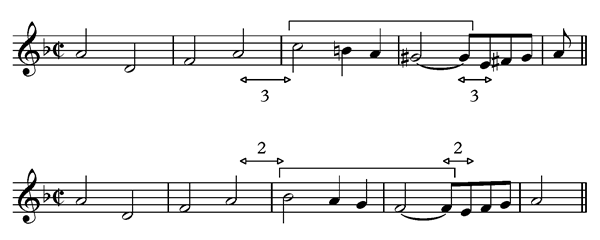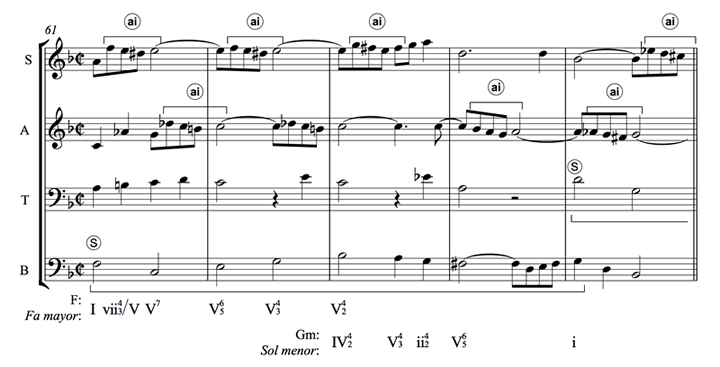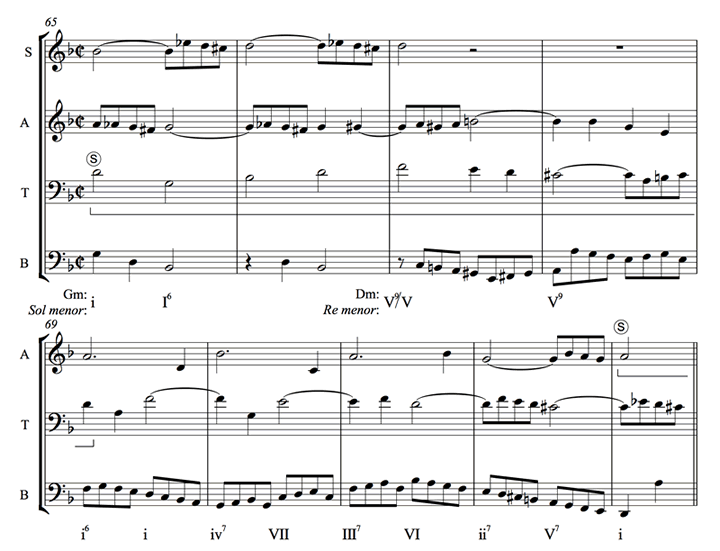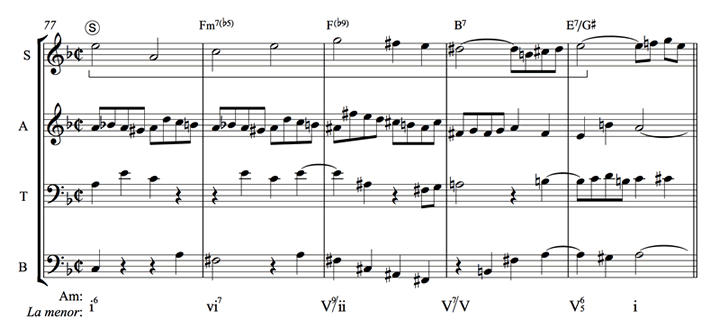Contrapunctus IV from the Art of the Fugue
José Rodríguez Alvira
Measures 43 to 81
A long episode that begins in measure 43 and ends in measure 60 leads us to another presentation of the subject. The bass followed by the tenor, alto and soprano presents this time a melodically transformed subject. In the subject as presented by the alto (first example) two intervals have changed: the ascending second between the second and third measures as well as the descending second before the eighth notes are now a thirds. The marked section of the subject is now a second higher than in the original:

The key at measure 61 is F major. The four first notes of the subject form an arpeggio of the dominant chord of F major (C - E - G- Bb). The motive ai in use by the soprano and alto adds some dissonances to these measures. In the alto the D flat is the minor ninth of the dominant chord but the B natural clashes with the B flat of the chord. The dominant chord is used as a IV degree of G minor and it is followed by the dominant of this key. Notice the use of motive ai over the G minor chord. The A flat is specially dissonant an unusual:

The G minor tonic chord is kept for two measures and it is followed by an E dominant chord. The F in the subject becomes the minor ninth of the chord. This chord works as a dominant chord of the dominant of D minor (measure 68). A short, very diatonic passage (a cycle of fifths) establishes the D minor key used by the alto to present the subject (measure 73):

The alto presents the subject in a similar way before the soprano's turn in the key of A minor in measure 77. This time Bach makes a variation preceding the F# dominant chord with an F# half diminished chord:
